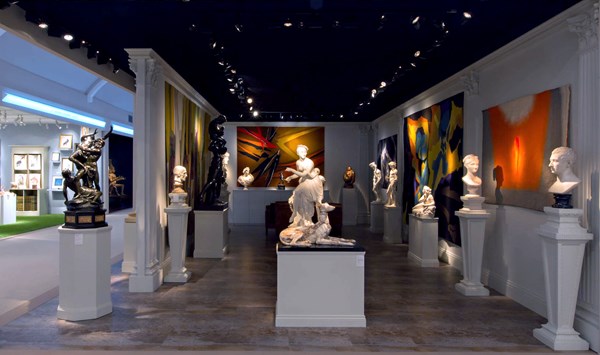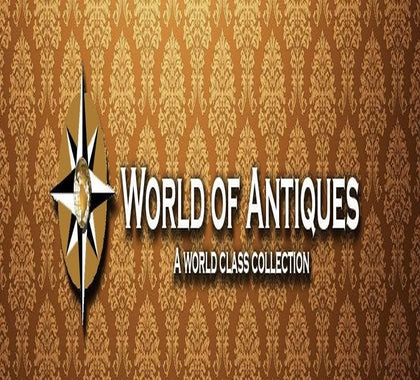Do you research:
Having a little foundation on plan times and vintage thing value focuses before you go antique shopping is unfathomably useful, as it can assist you with abstaining from paying a lot for something that is an imitation or from some unacceptable period. Ensure you converse with nearby classical sellers, watch recordings, and do some perusing before you shop so you realize how to perceive things, materials, makers, and recognizable imprints.
To start your excursion finding out about collectibles, research on the web or get a decent book regarding the matter. Take a gander at pictures, drawings or photographs demonstrating instances of chimneys, furniture or antique mirrors from various periods. Give close consideration to the various materials, completions, styles and embellishing themes basic to every period. For instance, a Renaissance chimney will be totally different from a Workmanship Deco chimney.
To give you a little head start, here's a smaller than usual antique furniture purchasing guide disclosing what to pay special mind to decide the age of a collectible. Taking a gander at these signs separately, just as the household item in general, should assist you with determining how old it is.
What to hunt for:
The primary guideline in antiquing on a tight spending plan is to avoid central avenue shops with elegant window shows. They may have uncommon Georgian silver available to be purchased, yet you positively won't get a decent arrangement on it.
The best places to sniff around are market slows down, deals, barters, fairs, swap meets, and antique stores that will in general heap their products from floor to roof where value levels will be moderate. Not all shops are what they give off an impression of being from an external perspective, thus, when starting, it might take a great deal of flying all through numerous entryways before you find the perfect spots. Whenever you've found great sources, there should be a lot of occasion to uncover numerous pearls with engaging sticker prices.
The key with gathering collectibles is to have persistence. Shop and slow down attendants may have numerous new pieces rolling in from week to week, so it generally pays to require some investment with the determination cycle, and pay a few return visits to your number one spots.
The web can likewise be a decent spot to discover reasonable collectibles — Craigslist and Ebay, for example. Be that as it may, there are numerous potential traps associated with purchasing on the web, so a few safety measures are important. On the off chance that photograph quality is poor, you might need to proceed onward. Collectibles should be captured well, including many detail shots, with exhaustive depictions. There are numerous individuals out there attempting to sell fakes, so try to investigate the thing altogether yourself prior to making a buy. Additionally think about delivery expenses, or fuel costs on the off chance that you intend to do the transportation yourself.
Why the love of Antiques ?
Ordinarily, collectibles are viewed as in any event 100 years of age. Unique collectibles, the first of their sort and style, are frequently very expensive relying upon where you discover them, yet old multiplications dating pre-1940s may look similarly as great, will at present have superb craftsmanship, and can be truly reasonable. Vintage things are by and large in any event 20 years of age, and collectables can be either vintage or collectible.
Wooden furnishings, once upon a time, was built by hand and made to a centuries ago. In America after the '40s, most everything was machine built, needed dovetail joints, and all in all, wound up on the garbage dump following two or thirty years all things considered.
Old seats and couches needing reupholstering are regularly a lot less expensive to obtain and recuperate contrasted with the expense of purchasing shiny new bits of low quality at the most reduced costs conceivable from scratch and dent section stores. Essential pieces are adequately simple to reestablish yourself with a little report and a touch of DIY aptitude. Textures can be purchased at low costs at business sectors, instead of buying from an upholsterer's example books.
Past that, there is additionally the buyer moving taste to consider in the classical world. Kinds of wood and facade, earthenware styles, producers, and so on, go all through design. On the off chance that you purchase when it isn't mainstream, you can get an extraordinary arrangement.
To Do's and not Do's:
- On the off chance that you discover something you totally love, give it a decent, careful investigation:
- Search for sensible and pragmatic indications of wear and long haul use, envision what the piece would have been utilized for, where hands and feet would wear it out. These sorts of "harm" really enhance collectibles.
- Check for dovetailing on cabinet joints of furniture and patina on the wood — a wooden cabinet with no pigeon tail joints isn't old at all and low quality development. As a rule, the farther separated and bigger the pigeon tails are, the more established the piece is.
- Quest for breaks, ugly staining, stains, broken pieces, chips, tacky drawers, handles that have been supplanted, and absence of toughness. All these are blemishes and a valid justification to get some information about bringing down a cost.
- A piece may have indications of provenance (verification of root, history, past possession). As a rule, this will enhance a collectible. Search for trademarks on silver and stoneware and names on furnishings. Sporadically a unique delivery address or producer's area will be taped on or carved in the wood on the rear of a household item.
- Consider whether the piece needs reclamation, or patching up. More significant collectibles could lose esteem whenever recuperated. Actually, I wouldn't refinish or cover up a household item dating '30s or more seasoned, however fresher, vintage things are amazing competitors.
- It is significant when purchasing old furniture to ensure the structure is sound, in any case reclamation will raise costs extensively. A piece that needs new springs versus just texture fix may extend a spending plan excessively far also.
Before You Buy:
Try not to be reluctant to get the most ideal arrangement. A very good quality antique vendor would probably raise an eyebrow or two over a value request, yet most different dealers will anticipate that a prepared purchaser should deal a bit. Here are a couple of tips on the best way to shamelessly request a rebate:
- Purchase more than each thing in turn. Perhaps the most effortless approaches to get costs down at the register is to mass a few things together and request a volume markdown. Once in a while a vender won't have the option to move on the cost of one thing, yet could bring down the others.
- Be respectful, however don't generally feel vanquished if from the outset the merchant appears to be hesitant to give route by any means. It is frequently adequate to play a little poker.
- In the event that you don't get the value down to where you need from the outset, attempt the "I'll need to consider the big picture" strategy and go for a further walk around the shop, or return later.
- For a thing that is set apart at $48, and you need to pay $38, have a go at beginning your exchange at around $28 so you have space to work up. You can never return and do the inverse! The merchant may giggle at your offer, and give a value a couple of dollars lower than the first, however returning with another offer nearer to your ideal can regularly work.
Perhaps the most ideal approaches to know whether costs are acceptable is to invest some energy orientating at various shops, slows down, and occasions. Seeing comparative things in different spots will help you sort out value levels and figure out where the best arrangements are to be had. In the case of something isn't old fashioned, but instead vintage, contrast the costs and recently made things like at World Market, and conclude which is the better purchase for you.
Gathering collectibles will likely take any longer than looking for their advanced partners, however the chase is a large portion of the good times. It is amazingly remunerating work, realizing you fabricated an inside with one of a kind, quality pieces for an equivalent or less measure of cash than purchasing new, modest garbage. New furniture consistently loses an incentive after some time; collectibles either hold their worth, or increment it after some time.
Signs of Fakes and Replica:
It's a bad dream for anybody purchasing collectibles - bringing home a marvelous period discover just to acknowledge later that it's a phony! Anyway, how would you detect those fraudsters?
To begin with, take a gander at the materials. Is it made of…
- Compressed wood?
- Chipboard?
Are there...
- Philips screws?
- Staples?
These are all proof of post-1930s development and are indications that the piece is a multiplication.
Search for indications of wear - yet more significantly, indications of wear that bode well! The underside of a nineteenth Century table may have a waxy edge around the edge where individuals have contacted it, an antique seat will probably give more indications of wear at the closures of the arms where individuals' hands have rested, and a cabinet that has been opened great many occasions will give indications of wear around the sprinters.
Check for exemplary confirmation marks like trademarks on silver and immaculateness marks on classical gems. There are various locales indexing diverse classical stamps and how to recognize them.
Here are some different signs to pay special mind to in case you're a sprouting collectibles master:
- Wood - more established furniture is frequently produced using more than one kind of wood - it didn't bode well to utilize costly wood for parts no one would see. Generations will in general be produced using one kind of wood all finished.
- Upholstery stuffing - engineered stuffing materials weren't presented until the 1920s, so unique pre-1920 upholstery will be loaded down with normal materials like horsehair.
- Hand cutting - slight defects in the craftsmanship are a sign that a thing was cut by a human, as opposed to a machine.
- Joints - multiplications are regularly joined solely by stick, though old fashioned pieces will in general have fortified joints like dovetail, dowel or mortise and join.
- Smell - more up to date household items will smell more up to date, with the fragrance of wood still perceivable. It's hard to depict an 'collectible' scent, however you'll know it when you smell it!
Recollect that proliferations have been around for quite a while, and a few generations are significant collectibles themselves - however just in the event that they're sold all things considered.
In the event that you figure a thing might be a phony, ask the merchant and ensure they answer decidedly one way or the other. Authentic vendors won't have a problem with your inquiries. In the event that there's any vulnerability in their answers, leave.
The more experienced you get, the simpler it will become to perceive the fakes. The best thing you can do is learn as much as could be expected under the circumstances - handle however many authentic collectibles as would be prudent, contrast them with known fakes, study reference aides and address different gatherers and vendors.
Is it possible to buy Antiques on budget ?
You don't need to be rich to appreciate or purchase collectibles - it's conceivable to discover incredible antique pieces to suit even the littlest financial plan.
- Be a fortune tracker - at old fashioned shops, don't simply take a gander at things at eye level. Chase on top of cupboards and racks and under tables - this is an incredible method to discover more modest concealed diamonds.
- Get to fairs and vehicle boot deals first thing - this may mean showing up at 6am yet it will be justified, despite any trouble! The very best deals will have been gobbled up inside a couple of hours. Having said that, on the off chance that you can hold out long enough it's well worth staying until the day's end. Venders might be eager to thump down their costs if things are left staying nearby. So make a day of it!
- Be available to anything - regardless of whether it's a tea kettle, conservative mirror or strolling stick, you can discover some truly exceptional things on the off chance that you keep a receptive outlook. Some of the time the least expensive, most unassuming knickknacks end up being worth a lot more.
- Try not to be hesitant to wrangle - go through five or ten minutes developing an affinity with the classical dealer. Get some information about the piece and possibly disclose to them somewhat regarding why you're keen on it. Ask the vender what their best cost is, and if it's to an extreme, delicately test to check whether they'd be eager to acknowledge less. Keep it amicable and hold your nerve - you never know, you may have the option to arrange a deal.
Always Explore all options:
Try not to restrict yourself by attempting to discover significant things at one notable vintage store. Little neighborhood old fashioned shops, second hand shops, bequest deals, carport deals, swap meets, classical shows, and even online transfer shops are generally puts where you can catch great collectible and vintage finds!
 BUY NOW, PAY LATER. Starting at 0% APR
BUY NOW, PAY LATER. Starting at 0% APR 

